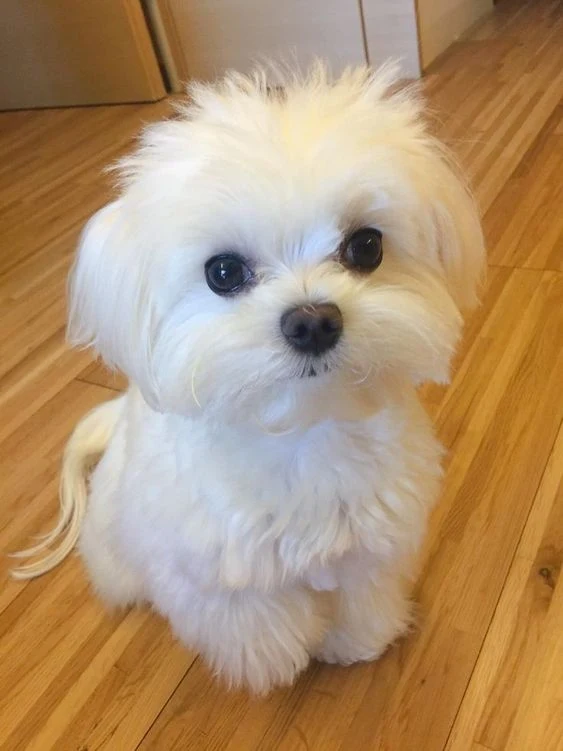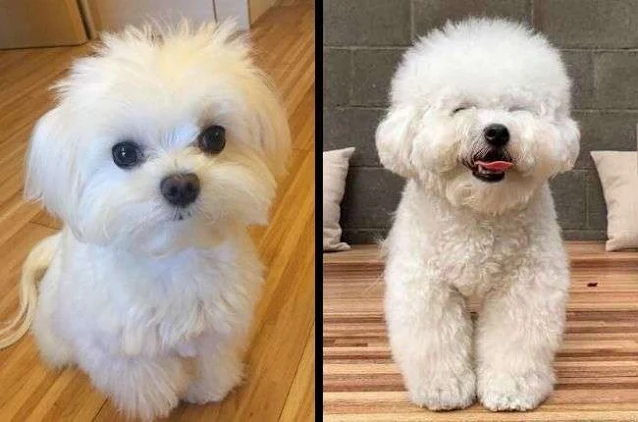If you're considering a small, affectionate companion, the Maltese and Bichon Frise are two of the most charming toy breeds available. Though similar in size and coat color, these dogs differ significantly in temperament, grooming needs, and ideal living situations. This comprehensive guide will walk you through everything you need to know about these two popular breeds, from their ancient histories to their modern-day personalities and health considerations.
Quick Comparison Overview
This table offers a side-by-side summary to help you quickly see the major differences between Maltese and Bichon Frise dogs.
| Characteristic | Maltese | Bichon Frise |
|---|---|---|
| Size | 8-10 inches, 3-7 lbs | 9-12 inches, 12-18 lbs |
| Coat Type | Single, straight, silky | Double, curly, cotton-like |
| Grooming Needs | High maintenance | High maintenance |
| Exercise Requirements | Low to moderate | Moderate |
| Trainability | Moderate (can be stubborn) | High (eager to please) |
| Good for First-Time Owners | Moderate | Yes |
| Lifespan | 12-15 years | 14-16 years |
| Barking Tendency | High | Moderate |
Origins and History
Understanding a dog breed's roots can give insight into their behavior and role in human society over time. Both the Maltese and the Bichon Frise hail from the Mediterranean, but their paths diverged early on.
Maltese Heritage
The Maltese is one of the world’s most ancient toy breeds, with a lineage dating back over 2,000 years. Believed to originate from the island of Malta or nearby Mediterranean regions, these small, elegant dogs were cherished by ancient Greeks and Romans. They were often featured in artwork and known as status symbols among aristocrats and royals.
Learn more about Maltese dog breed information for tips on care and history.

Bichon Frise Heritage
The Bichon Frise is part of the Barbichon family of dogs, which also includes the Maltese, Havanese, and Bolognese. Originating in the Mediterranean, the breed found favor in the courts of France, Spain, and Italy during the Renaissance. After declining in popularity, the Bichon Frise was revived in the 20th century and remains a beloved companion dog around the world today.
Discover more about Bichon Frise companion dogs and their traits.
Physical Characteristics
While both breeds are small, white, and adorable, they differ noticeably in build and coat type. These differences may affect grooming time, shedding, and even allergies.
Maltese: Smaller, fine-boned, 3–7 pounds, 8–10 inches tall. Elegant and dainty appearance.
Bichon Frise: Slightly larger and sturdier, 12–18 pounds, 9–12 inches tall. Square, athletic posture.
Coat Differences
Maltese
The Maltese has a single, long, silky coat that requires daily brushing. They are hypoallergenic and low shedding.
- Single-layered coat, straight and silky
- Floor-length if untrimmed
- Pure white (slight lemon tinge allowed)
- Daily brushing to prevent mats
- Hypoallergenic
Bichon Frise
The Bichon Frise has a dense, double-layered coat, requiring daily brushing and professional grooming every 4–6 weeks.
- Double-layered coat with soft undercoat
- Curly outer coat resembling cotton or powder puff
- Pure white
- Hypoallergenic
- Professional grooming every 4–6 weeks
Temperament and Personality
Maltese
Alert, loyal, deeply attached. Can be vocal and prone to separation anxiety if left alone often.
Bichon Frise
Cheerful, curious, and social. Excellent with children and pets. Less prone to anxiety, adapts well to new environments.
Training and Intelligence
Maltese
Moderate trainability; can be stubborn. Positive reinforcement, consistency, and early socialization are key.
Bichon Frise
Eager to please and highly trainable. Enjoys tricks, agility, and obedience classes.
Exercise and Activity
Maltese
Happy with short walks and indoor play. Adapts well to apartments (best dog breeds for apartment living).
Bichon Frise
Needs 30–45 minutes daily exercise. Loves outdoor activities, interactive games, and social settings.
Health Considerations
Maltese
- Patellar luxation
- Progressive retinal atrophy (PRA)
- Hypoglycemia
- Collapsing trachea
- Dental issues
- White dog shaker syndrome
Bichon Frise
- Hip dysplasia
- Patellar luxation
- Bladder stones
- Allergies and skin sensitivities
- Cataracts and other eye problems
- Cushing's disease
Grooming Needs
Maltese
Daily brushing, baths every 1–2 weeks. Clean eyes and facial hair to avoid tear stains.
Bichon Frise
Curly coat requires daily brushing and professional grooming every 4–6 weeks. Regular ear and dental care essential.
Making Your Choice
Choose a Maltese if you:
- Want a small, portable companion
- Have a quieter home or live alone
- Can dedicate time to grooming and attention
- Prefer a loyal lapdog
Choose a Bichon Frise if you:
- Want a playful, social family dog
- Have kids or other pets
- Enjoy training and interactive play
- Prefer a sturdy, adaptable companion
Cost Considerations
Grooming expenses are significant; Bichon Frise may have higher food costs due to size. Purchase price: $1,000–$3,000 from reputable breeders.
Conclusion
Both the Maltese and Bichon Frise are excellent companions with unique strengths. Maltese is ideal for refined, devoted lapdog owners; Bichon Frise suits active families. Consider lifestyle, living space, and experience level before choosing.
Note: Individual personality and training vary. Proper care, socialization, and love bring out the best in any dog.

